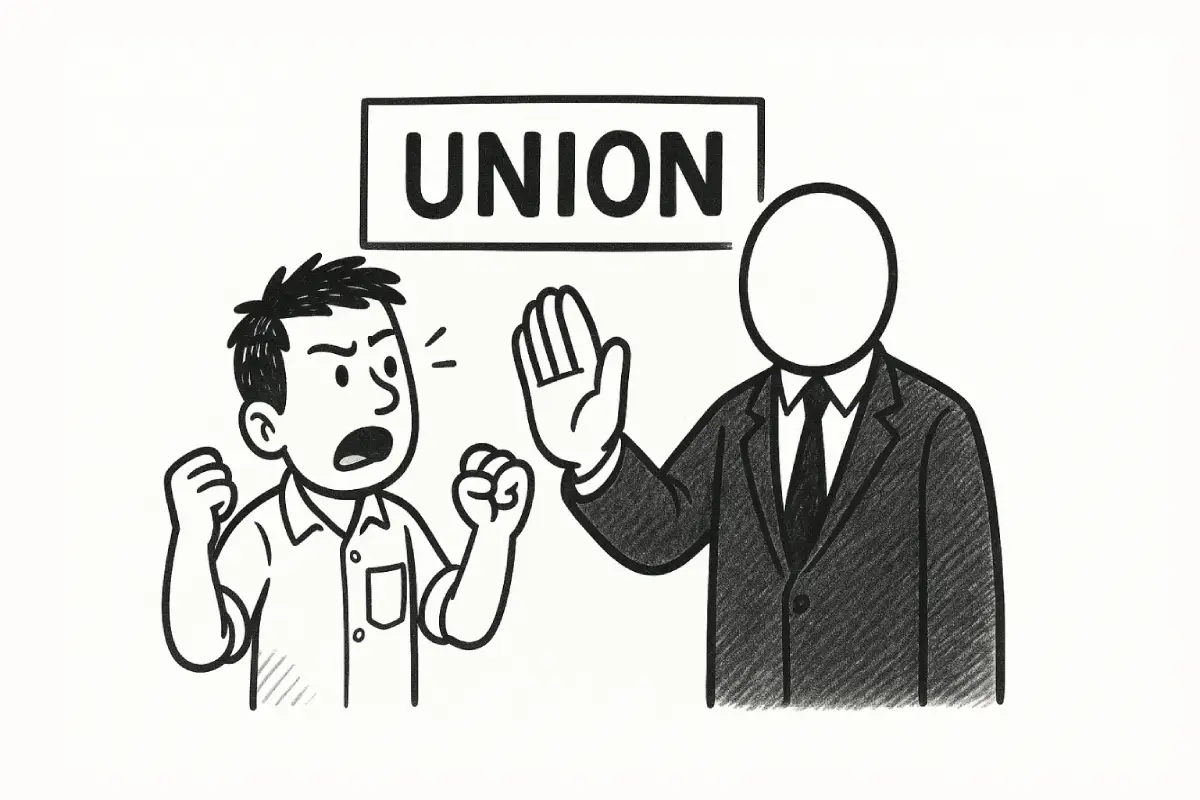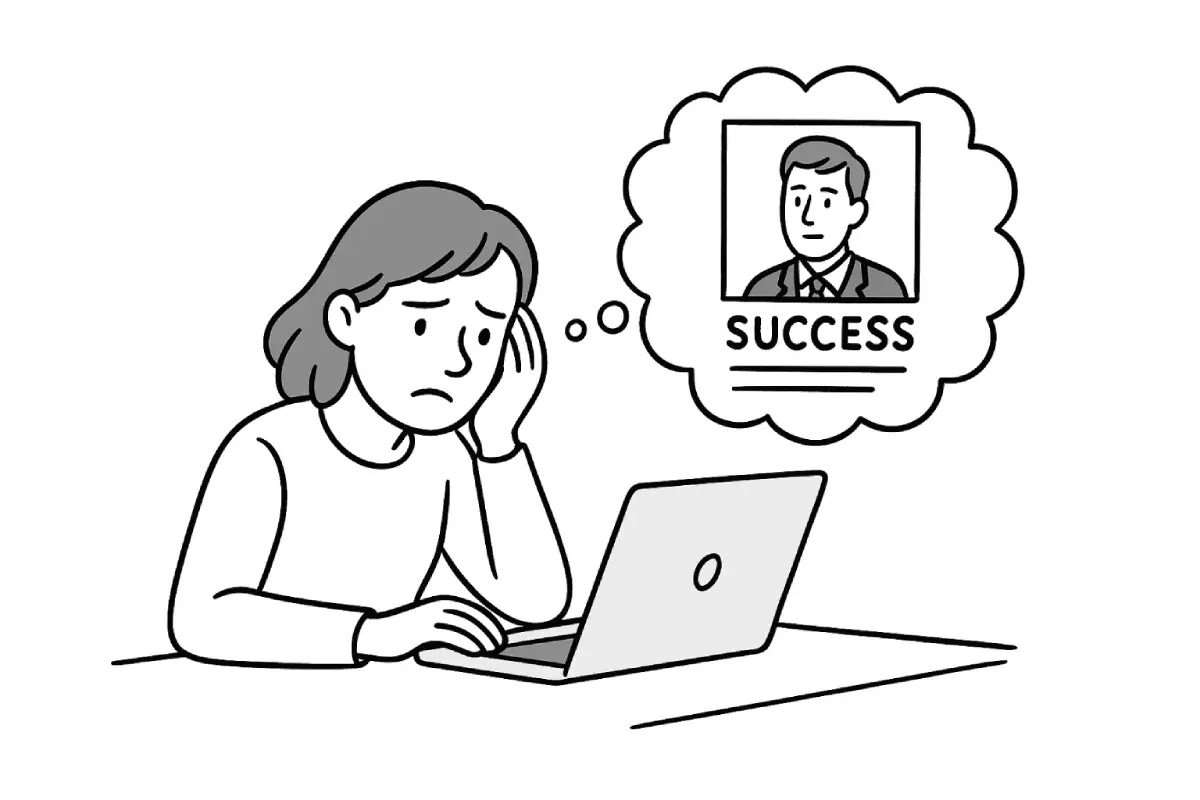Mark’s day starts the same way. The coffee machine hums. The laptop screen flickers. It’s a Tuesday. He works a “fully remote” job. The company website says so. The offer letter said so. The truth is on the highway. He is in his car at 7:15 a.m. The sun is low. He’s on his way to the office. His team is there. His project lead is there. He has to be there. This is his remote job.
The word itself is a fraud. It’s a marketing term. A bait-and-switch. “Remote” promised freedom. It delivered a new kind of chain. The promise was simple. Work from anywhere. The reality is complex. Companies now call any arrangement that isn’t five days a week in the office “remote.” The word has lost all meaning. A Gallup poll from May 2025 found 51% of remote-capable U.S. employees work a hybrid schedule. Only 28% are exclusively remote. The lines are blurred. The rules are unwritten.
It started with a survey. An internal poll about “employee preferences.” They asked who wanted to “re-engage” with the office. It sounded like an invitation. It was a litmus test. A month later, the first mandate came. One day a week. Then two. It was never written in stone. It was a rolling edict. The office lease had to be justified. Desks sat empty for months. Now they are filled for two days. A simple equation. Real estate wins. The worker loses. Mark’s gas receipt, an extra $40 a week. His car mileage, ticking up. The two-hour block of his morning, gone. The podcast he listens to feels like a funeral march.
He drives past the office exit on Monday. A feeling of relief washes over him. A tiny victory. The next day, he gets up before his kids are awake. He puts on pants. He doesn’t want to. He has to. The routine is a ghost of the past, but the body remembers. The body aches. This isn’t freedom. This is just a different kind of obligation. A different kind of boss. The new boss is a spreadsheet. It tracks the number of people in a chair.
The Unseen Costs
The lie is financial, too. Remote work saves money. The worker pays for their own office. Their rent covers the desk, the chair, the electricity. The company saves on square footage. The worker pays the utility bill. That quiet corner of the living room, once a retreat, is now a cost center. The coffee maker is his. The snacks are his. He buys the printer paper. He buys the ink. The company sends a check for $500 to “set up your home office.” It is a one-time payment. The costs are recurring.
The average hybrid worker saves $15 a day. This number is not a luxury. It is a budget item. It buys groceries. It pays for gas. It’s real money. A woman I spoke to, a copywriter from Georgia, calculates her savings in cups of coffee. Every day she doesn’t commute is two dollars she gets to keep. The company saves on rent for an entire building. It’s not an equal exchange.
The tax on the worker is invisible. The company’s savings are not. They are on the balance sheet. They are in the quarterly report. They are a line item for the shareholders. The worker’s savings are a drop in the bucket. They are a small comfort in a system built against them. The company benefits from a global talent pool. The worker is burdened by the demands of that distance.
The Team-Building Trap
Maria took the job for her parents. They are in Denver. She lives in Boston. The job was “100% remote.” It was perfect. She could visit them without asking for time off. She could work from their kitchen table. She could be present. She envisioned Thanksgiving, a quiet week in July. Her siblings, a plane ride away, could join. It was a vision of life.
Then the email arrived. A mandatory “team-building offsite.” It was in Austin. It was not optional. It was a week. It came with a travel stipend. It did not cover a full plane ticket. It did not cover a full week of meals. Maria had a choice: pay out of her own pocket or don’t go. She chose to pay. She lost a week of her life. She lost hundreds of dollars. Her job was still “100% remote.”
This is a failure of trust.
Companies use these mandates. They say they’re about culture. They are about control. They want to see faces. They want to feel power. It’s a return to the old ways. It’s a tax on workers. Especially those who live far away. They are penalized for the very freedom the job offered. Some workers quit over it. 56% of professionals know someone who left a job due to a return-to-office mandate. It is a source of profound resentment.
The offsite itself was a charade. The CEO gave a speech on “synergy.” They played a game with ropes and blindfolds. She made small talk about her cat. Her real self, her family in Denver, her quiet life in Boston—she kept that hidden. She watched a senior manager micromanage the rope-tying. It was all a performance. The company spent thousands on an empty exercise. Maria spent hundreds on a lie.
The Generational Divide
The remote revolution was supposed to be for everyone. It wasn’t. It was for older, more established workers. The data is clear. Gen Z workers, ages 20-24, are the least likely to apply to remote jobs. They want to be in the office. They crave social interactions. They grew up on screens. They want face-to-face.
The remote job is a lonely box. A screen, a camera, a headset. There are no water cooler conversations. There are no spontaneous meetings. There is no passive knowledge sharing. Communication is deliberate. It is scheduled. It is often a burden. It can create burnout.
One in four remote workers cite loneliness as their top struggle. The isolation is real. The digital tools meant to bridge the gap sometimes make it wider. A lack of trust is a two-way street. Managers feel a lack of control. Employees feel a lack of trust. The result is more meetings. More check-ins. More surveillance. This is the new micromanagement. The employer watches. The employee feels watched. It is a corrosive relationship.
The Manager’s Burden
The manager is caught in the middle. The company demands productivity. The team is dispersed. The old ways of managing are useless. You can’t see the work. You can’t see the struggle. You can’t see the focus. This creates anxiety. It creates a need for control. This is a human instinct. A flawed one.
Managers resort to bad habits. They schedule more meetings. They use tracking software. They demand frequent updates. They ask for proof of work. This behavior, born from fear, destroys morale. It makes the job feel like a prison. The manager thinks they are being thorough. The employee thinks they are being watched.
The manager is also a victim. They have their own bosses. The C-suite, the board. They demand results. They ask why the team is “disconnected.” They ask why the company culture is “eroding.” The manager has no good answer. The manager pushes down. The pressure flows downhill. It lands on the worker. The worker feels the weight. The manager feels the fear.
The New Surveillance
The new reality has a dark side. It is the eye in the sky. Employers can’t see their workers. They fear productivity will drop. The solution: software. It tracks keystrokes. It counts mouse clicks. It takes screenshots. It is a digital leash.
This technology is not an anomaly. A survey from The HR Director found that 77% of employees find work-based notifications distracting. The very tools meant to connect them become a source of constant interruption and distraction. The worker is never truly off. Slack messages at 9 p.m. An email at 6 a.m. The lines between work and life blur into a single, unending stream. There is no home. There is only a home office. A room with a door that never closes.
A woman named Sarah, a “100% remote” data analyst, told me her company installed an application. It was called “WorkWatch.” It monitored her keystrokes. It recorded her active time. If she stepped away from her desk for ten minutes, it flagged her. Her manager got a report. The boss wanted to know where the time went. Sarah felt like a child. She felt like a robot. She started timing her bathroom breaks. This is a profound breach of trust. It proves the system is not built on results, but on the illusion of control. The company wants to see the worker work. It does not trust that the work will get done.
A Pew Research Center survey, nearly half (46%) of U.S. remote workers would be unlikely to stay at their job if forced to return to the office full-time. This is about more than preference. It’s about a non-negotiable expectation that was not honored. It is a deep, psychological betrayal.
My Own Ghost Commute
I’ve had my own share of it. A job listing said “remote.” It was. For six months. Then the CEO decided we needed more “collaboration.” My team was in New York. I was in Detroit. The mandate came down: “Everyone must attend the quarterly planning meeting in person.” The ticket cost $700. My “travel allowance” was $350. The difference came out of my pocket.
The meeting started at 9 a.m. I got in at 1 a.m. The day before. I sat through 8 hours of presentations I had already seen on a screen. I listened to people talk about “synergy.” I saw my colleagues for the first time. It was awkward. We shook hands. We said hello. We went back to our screens.
The next day, I was home. The company sent a follow-up email. It said the in-person meeting was a great success. It said we had re-established our “team connection.” I looked at my bank account. I had a coffee with my wife. That was my connection. That was my team. I quit a month later. It was a matter of principle. The cost was not worth the lie.
A New Dictionary of Work
The language has been corrupted. “Flexible” means you flex to their schedule. “Hybrid” means you commute on their terms. The words are hollow. The meaning is gone.
The reality is simple. The jobs are what they are. The words on the job description mean nothing. The actions of the company mean everything. Before you take a remote job, ask the right questions. What are the in-person mandates? How often? What’s the budget? Get it in writing. Don’t trust the buzzwords. They are empty. They are designed to be.
The truth is hard. Most remote jobs are not fully remote. They are a new model of work. A model of controlled flexibility. It has its benefits. It has its costs. The cost is often paid by the worker. The cost is time, money, and broken promises. This is the truth. Everything else is a press release.
You might also like: Why Hybrid Work Might Become the Worst of Both Worlds









